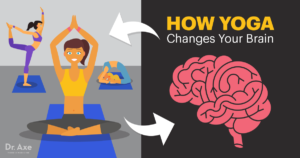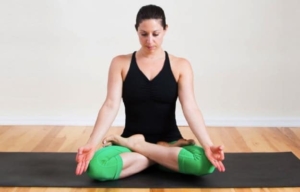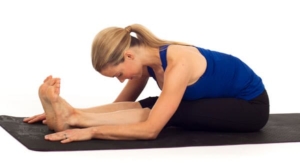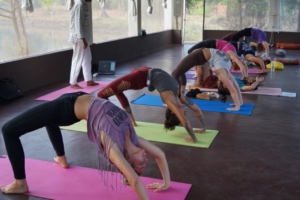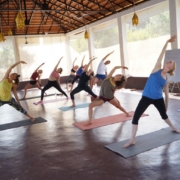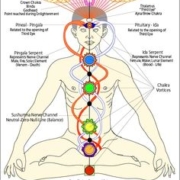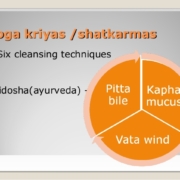Out brain is an amazing organ which is capable of doing unimaginable things. Protecting the well-being and sanity of our brain should be the top priority. There are several factors such as stress, lifestyle and diseases that might allow the psychiatric disorders to affect the functioning of our brain. To avoid this undesirable situation and maintain the strength of your brain, it is advisable to make yoga a quintessential part of your daily routine.
Our brain is a muscle and just like any other body part, it requires exercise for better functioning. Anxiety or stress can lead to malfunction of your brain which can be very well averted with help of yoga. Yoga is known to regulate the vagus nerve which deals with the mood and stress levels. The breathing technique involved in yoga calms your body and invigorates your mind.
There are specific yoga poses which boost the strength and functioning of our brain. Here’s a look at 7 such asanas:
-
Padmasana – Lotus pose
Padmasana is synonymous with lotus and considered an epitome of purity, detachment, and enlightenment. It is a meditative pose which helps in fetching maximum benefits if performed in morning. Hold the pose for at least 1-5 minutes.
Benefits
It calms the brain and relaxes the mind. Padmasana also awakens the chakras in our body and increases the awareness. Other benefits include stretching of ankles and knees, making your hips flexible.
-
Vajrasana- Diamond pose
Vajrasana is the kneeling exercise which is accompanied by breathing technique. It is believed that practicing vajrasana helps our body to become as strong as a diamond. But unlike other asanas, the vajrasana must be practiced for 5-10 minutes post a meal.
Benefits
The breathing involved in Vajrasana helps in relaxing the brain. Other benefits of the vajrasana are improved digestion and relief in constipation. It improves blood circulation and combats acidity.
-
Ardha Matsyendrasana – Half spinal twist pose
The ardha matsyendrasana is a part of the 12 basic hatha yoga poses which is best practiced in the morning on an empty stomach or 4 to 6 hours after taking a meal. The asana should be held for at least 30-60 seconds.
Benefits
The asana is said to increase the supply of oxygen to the body and brain and detoxify the internal organs. Other benefits include purification of blood and improvement in blood circulation throughout the body.
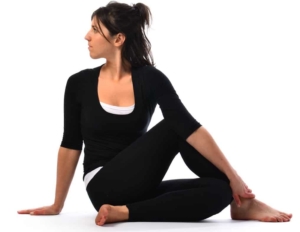
-
Paschtimottanasana- Seated forward bend
It is classic hatha yoga poses which is simple to perform and gives your body a good stretch concentrating on the back. It can be performed either in morning or after 4-6 hours of meal. The asana should be held for at least 30 to 60 seconds.
Benefits
The asana helps in relieving mild symptoms of stress and depression. Other benefits of the pose are good stretch, activating the kidney, and relief from insomnia, headache, and fatigue. It also helps in reducing high blood pressure and obesity.
-
Halasana – Plow pose
The halasana helps in discovering the hidden capabilities of the body. It is an advanced yoga pose which represents the shape of the plow. It is practiced in morning on an empty stomach by holding the pose for 30-60 seconds.
Benefits
The halasana has a calming effect on brain and it helps in reducing stress which boosts the functions of brain. Other benefits of the halasana pose are improved metabolism, reduced blood sugar, reduced strain on back and enhanced posture.
-
Mayurasana – Peacock pose
The Mayurasana resembles with a walking peacock and it seems little difficult at first go. But with passage of time one gets comfortable. The asana should be performed in morning as your body has the energy generated from the meal you had consumed the last night. Hold the asana for at least 30 to 60 seconds.
Benefits
The asana is believed to improve the concentration and focus. It also improves the coordination between body and mind. Other benefits of the asana include detoxification of body, strengthening the abdominal area and combating diabetes. It energizes your kidneys and makes your spine stronger.
-
Sirsasana – Headstand
It is the king of yoga poses and requires complete inversion of the body. It needs a long practice to master the pose. The headstand should be performed on an empty stomach after the bowel movement. The asana should be held for a minimum of 1 to 5 minutes.
Benefits
The inversion during headstand is said to improve the functions of brain and release neurotransmitters. It also balances the hormones and release endorphins. Other benefits of the pose include improved digestion, strong longs and relief from asthma.
If you too are interested in mastering the art of yoga, the Yoga Teacher Training at Dharamsala at Mahi Yoga is the place for you. Along with a comfortable stay amidst tranquil surroundings, one gets to learn the nuances of yoga from experienced gurus.
The YTT certification at the end of 200-hour training enables you to practice your profession across the globe.

